So you’ve upgraded the old tube to that ultra-seek wall mounted LCD or plasma HDTV. You’re getting valuable floor space back, the living room is looking less crowded. Now you’re going for that minimalist look, getting rid of the monstrous entertainment center. Next on the to-do list are those large boxes, called floor speakers, that adorn your living room. Enter the fashionable in-wall speakers.
A good in-wall speaker installation can yield excellent sound quality, be pleasing to the eye, and all in a small package. The problem with wall-mounted speakers is that they project sound at angles that correspond with their installations which is either straight down or horizontally across and above the audience. With floor speakers, you could always turn and direct the sound in the direction of the target area. Floor speakers are also around 5ft 1/4 in height which are approximate audience level.
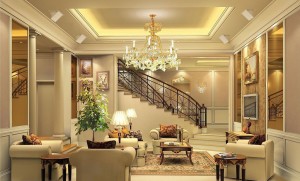 For a more calibrated sound projection, you can take a look at motorized speakers. QPD Speaker has a lineup of in-ceiling and in-wall speakers motorized to adjust for angles of 25 to 50 degrees.
For a more calibrated sound projection, you can take a look at motorized speakers. QPD Speaker has a lineup of in-ceiling and in-wall speakers motorized to adjust for angles of 25 to 50 degrees.
Sound Quality
To be fair, I’ll take superior sound quality (with affordability firmly in mind), over fashion and decor; however, who can argue with these pictures listed below. You can take a look at more of the gallery at Quality Power Dynamics Speakers.

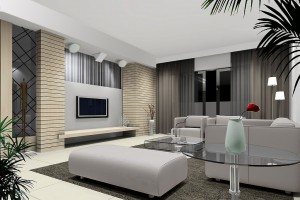
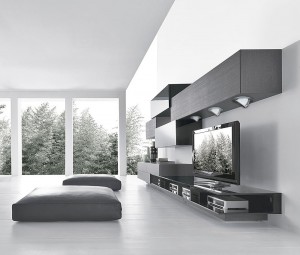
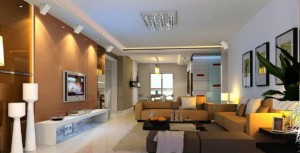
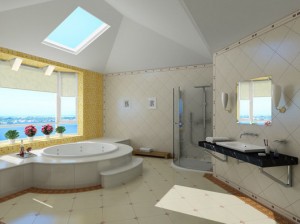

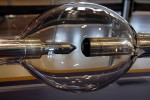
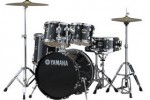

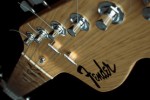
Whoa…….bob got pwned! Nice work, MT. …… and you are correct on all accounts.
Bob, I may not be working in the industry professionally anymore, but I just finished advising an older brother on his home theater design and system. We changed every component the local retailer had specified except one. The finished system looks and sounds dynamite.
All I did differently as opposed to what the retail guy would have had them do was work WITH the physics of the room and the sound and picture my brother and sister-in-law wanted to experience. On an $8,400 original quote, we spent $8,300… but we spent it correctly.
My ‘personal opinions’ come from six and a half years of experience and CEDIA training where almost everything we did as a company was custom install. When you disappoint a customer in that field, it goes far deeper than ‘it doesn’t look or sound good.’ When that dissatisfied customer complains to their builder who complains to the architect, putting in the wrong gear can cost you a lot of money.
We used in-walls primarily in a Master Bedroom situation where the TV sat above a chest of drawers and the speakers were outboard left and right of that position. Usually no center channel nor rear surrounds nor subwoofer involved. We used in-wall and in-ceiling speakers made by SpeakerCraft (lifetime warranty) and Paradigm. We used surface mount speakers by Bose.
I believe if you look these up, Bob, you’ll find that the ‘customer comments’ rate all of them pretty highly. We configured each speaker in each location based on what that room called for, not whether they were featured in a magazine or internet article. Quite often we would use Paradigm in-walls (formal living room), SpeakerCraft in-ceiling (kitchen), and Bose surface mounts (patio or deck) in the same project.
You can use my ‘opinions’ or not, sir. I’m not here to make you happy.
By the way, I’m 57 now and a long ways from being ‘retired.’ I bought my first component system when I was 16 with my own money and I’ve been a lifelong student of good sound and picture when it comes to being entertained. I still subscribe to several industry magazines and I constantly search for small improvements on my current system. I consider it ‘fun’ and I’ll never be too old to indulge in that.
mt your living in a world now where you have to try it before you speak.as mao said investigate to have the right to speak.if it does not work for you great but most of your statements are your personal opinions get down to av buisness today seems like by your statements when i did this and when i did that your out of the loop and retired or doing some other work in big sky country.
“perfect directional overhead sound”? Movies, when you watch them, contain a fair amount of dialogue. When someone speaks on screen, it’s nice to have the sound come from somewhere close to their head since that’s where their voice is.
You can’t beat the look of properly installed in-wall or in-ceiling speakers. The company I worked for used lots of them in rooms where music was the sound being distributed. We used 10″ in ceiling speakers for the Rear Surrounds in most applications.
My whole point here is that the original article was written to make you think you’d have a Home Theater experience using in-walls. My response would be… you don’t know what you’re missing.
It boils down to How Important Is The Sound as part of the Home Theater equation?
NOTE: In a commercial theater application, the speakers – and there are lots of them – actually sit beside and behind the screen which is constructed of a fabric that is fairly transparent to sound. For Home Theater, you are trying to mimic that experience. Ceiling mount speakers just won’t get that done. The actor/actress speaks and you get the “voice from above”… and it sounds quite a bit less than divine.
ok i think were trying to compare apples to oranges here,my feelings being and expert also is big and clunky is good but small and hideaway has far more advantages then my old quad tower speakers wire running every where in the mid 1970s which i lost total interest in and gave them away in 1986. when i went in wall and in ceiling thru out my big house.it all comes down to what is most important to the customer and i like sleek fast and 21 st century with great perfect directional overhead sound.
Bass with Sub? Back in my home theatre design days, we used Bose Cube Systems – AM-7’s primarily – when solving placement problems like TV in the Corner. For every system, we configured a Velodyne 12-inch powered sub to fill in the bass (and below) where the AM-7’s puked out.
Your problem with cheap, small speakers is the loss of warm, deep midrange and most of the bass. They simply don’t cut it in those frequency ranges.
The room itself is a part of your system. The Phase Tech’s mentioned above might be great in the author’s room but put ’em in mine, which is fairly large, and they may not be able to generate enough SPL to where I don’t have to listen at ear bleed volume in order to hear everything.
Larger speakers have more cone surface and so they move more air. You get rich, full sound even at a low volume level… and that’s the difference between a good, solid system and one that you have to make compromises with.
bass with sub do not knock em till you try them.
Before you go tossing your ‘big box speakers’ you may want to look into the principle of Physics called SPL or Sound Pressure Level.
The condensed definition of SPL is the pressure generated against your eardrum by a sound wave. Smaller speakers = less SPL = say goodbye to that Bass Response you loved.
These people called cabinetmakers have been beautifying ugly objects for years by giving them a proper home. Before you go remodeling your living room by tearing up the sheetrock to run the wires these in wall/in ceiling speakers require, you may want to look into the option of a new cabinet instead.
Unless your room is small and can be completely closed off, small speakers will never give you the rich, full, bass-loaded sound that ‘big box speakers’ will. They can’t physically generate the SPL necessary to do that, and no amount of staring at small speakers and wishing they sounded big will change that property of physics.
Lastly a nice big, crystal clear picture with little tiny sound to go with it is not a marriage made in heaven.
Dude i guess you havent heard a real speaker then b/c ill put a pair of Phase Tech CI-70’s up against any MID/Entry level tower speakers. You would never even know the difference. Besides every environment is diff.
I’m sorry, people, but from having designed and sold high end A/V and Home Theatre systems for over 6 years, I can tell you that by comparision, speakers like these with a upper middle High Def flat screen TV is like having a Lamborghini for the video and a Yugo for the audio.
Some inwall speakers are very nice sounding… IF you prepare the wall environment they sit in properly. This involves installation of a backbox of some type. That wall is every bit as important to an inwall speaker as the box is on a regular free standing speaker.
Excellent inwall speaker companies, such as SpeakerCraft, have backboxes available for every inwall/inceiling speaker they sell. Typically these backboxes can only be used in a prewire/open studwall installation as most homeowners don’t want to do any sheetrock repair and repainting with their retrofit installation.
Nowadays with the number of concert DVD’s available, I would never use inwall or inceiling speakers with my new flatscreen unless I absolutely had to.